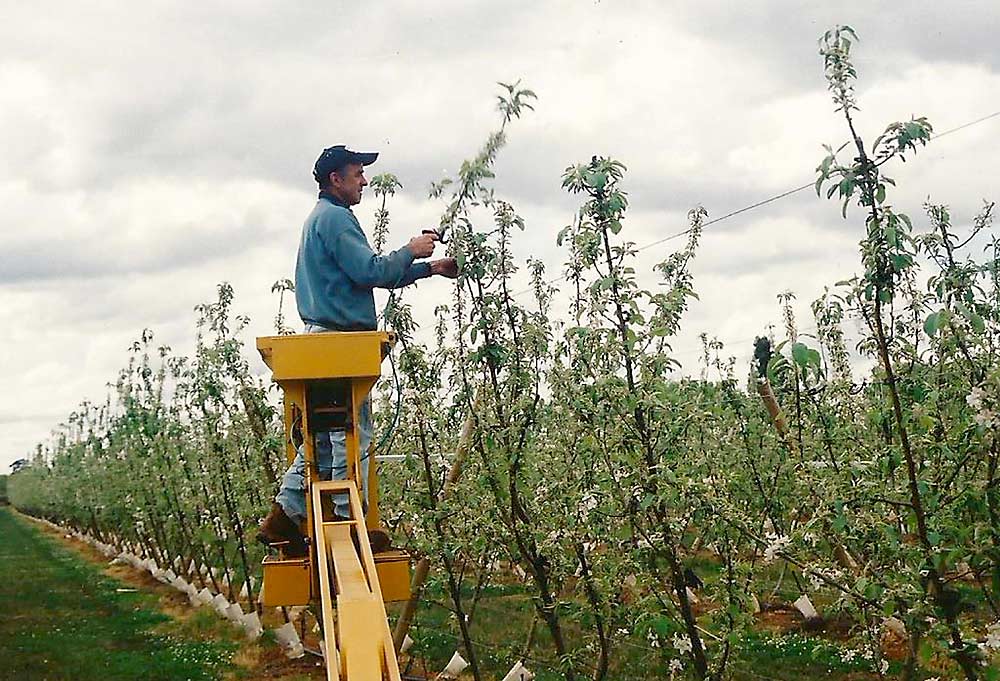
Ten pruning rules have been developed to help you cope with the complexities of balancing vigor with fruitfulness. These pruning rules are universal rules and are meant to keep your apple and pear trees calm and productive.
RULE 1: Prune your block with the weakest trees first and your strongest trees last.
Trees that are pruned in early winter become more vigorous than trees that have been pruned just before or after flowering.
RULE 2: Remove big wood — using the 3-to-1 rule (see Figure 1).
Big wood has limited cropping potential, and produces small, low-grade fruit, because big wood has too much vigor and creates shading. Remove big wood early in the life of the tree, and do not allow it to crop.
This rule ensures that your fruiting wood remains young and productive.
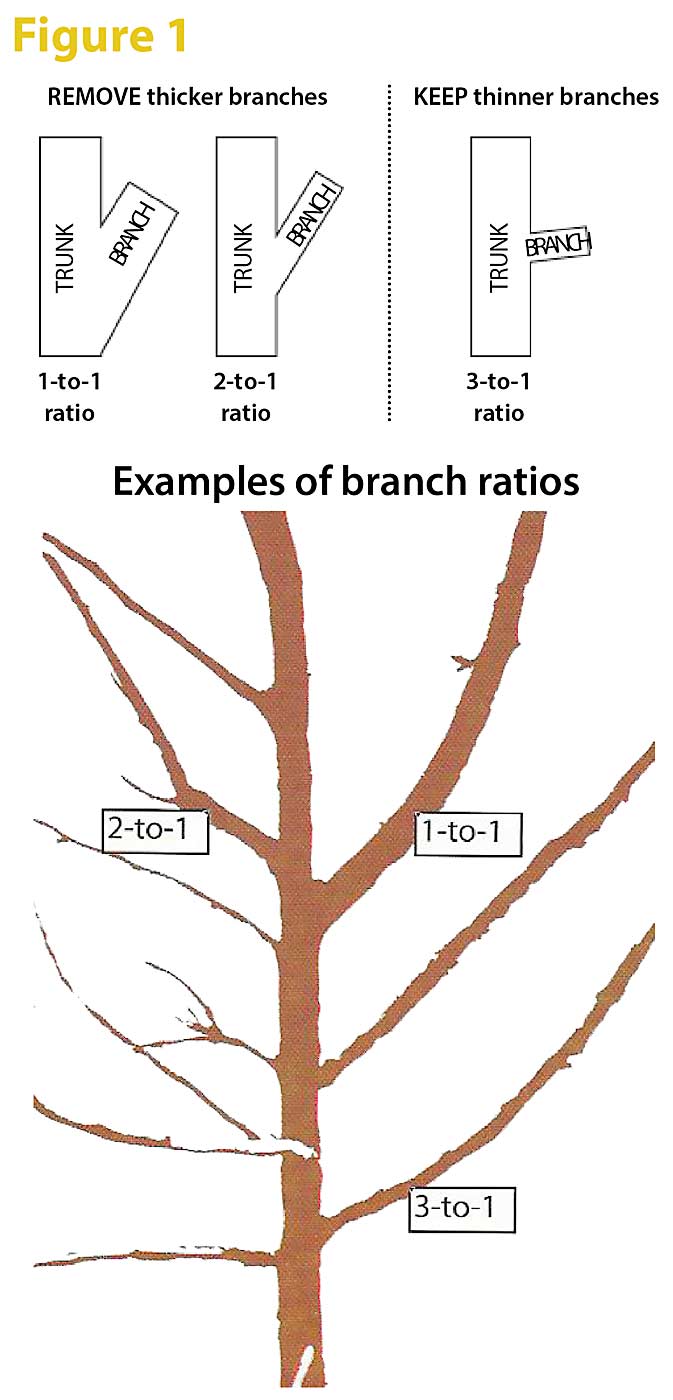
RULE 3: Make thinning cuts in preference to heading cuts.
A thinning cut removes an entire shoot, branch or scaffold and does not disturb the natural growth and shape of trees. Thinning cuts do not interfere with apical dominance.
A heading cut is most invigorating, and new strong shoots develop immediately below this cut. Heading cuts also create forks, crowding and shade. Avoid making many small heading cuts, because they irritate the tree and will make it more difficult for you to keep the tree calm.
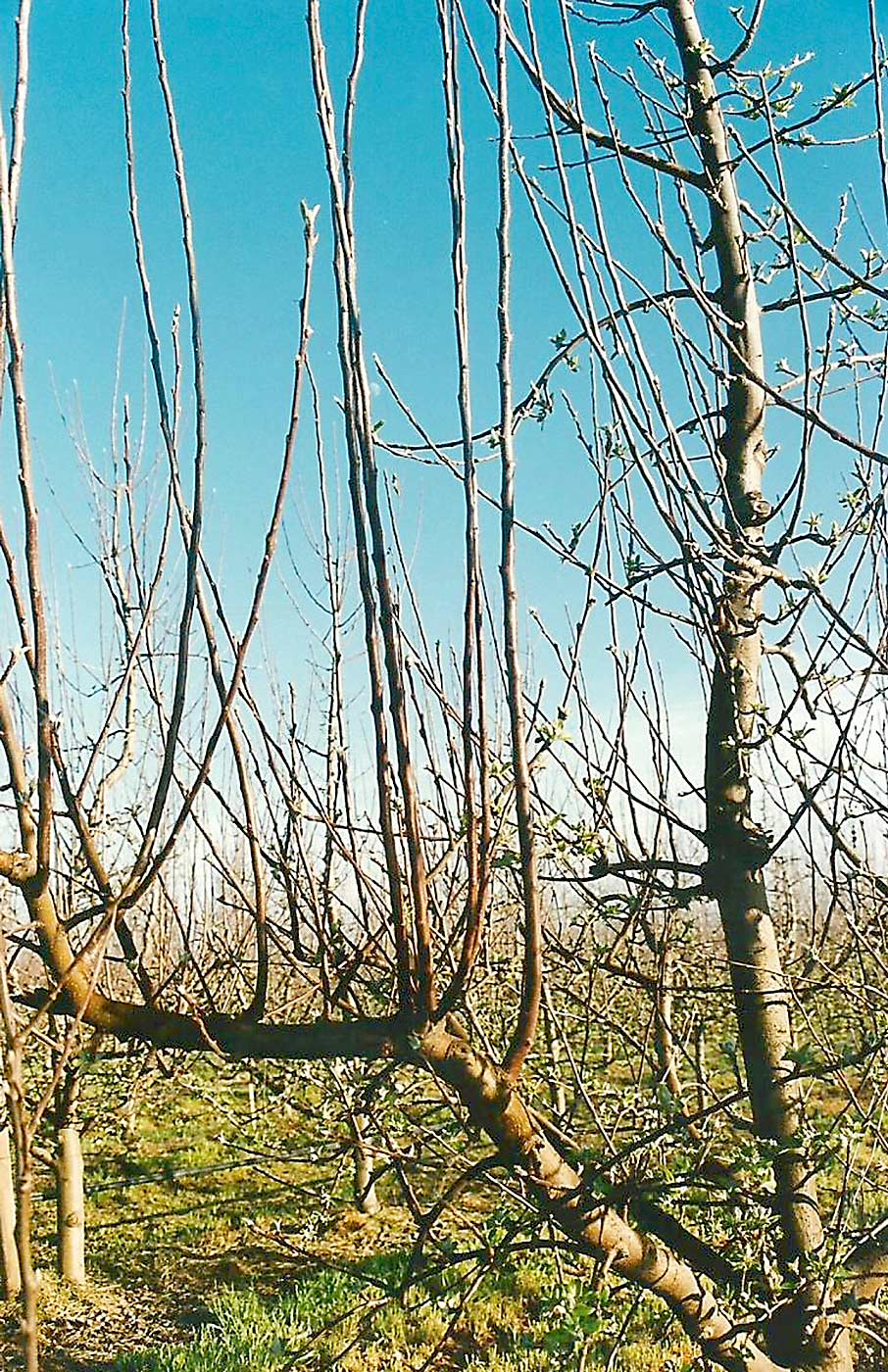
When you imagine looking down onto the tree after it has been pruned in winter, you should see as few heading cuts as possible.
RULE 4: Make pruning cuts on the undersides of branches or scaffolds (see Figure 2).
This is another way to avoid the growth of strong upright shoots, shading and additional cost of pruning.
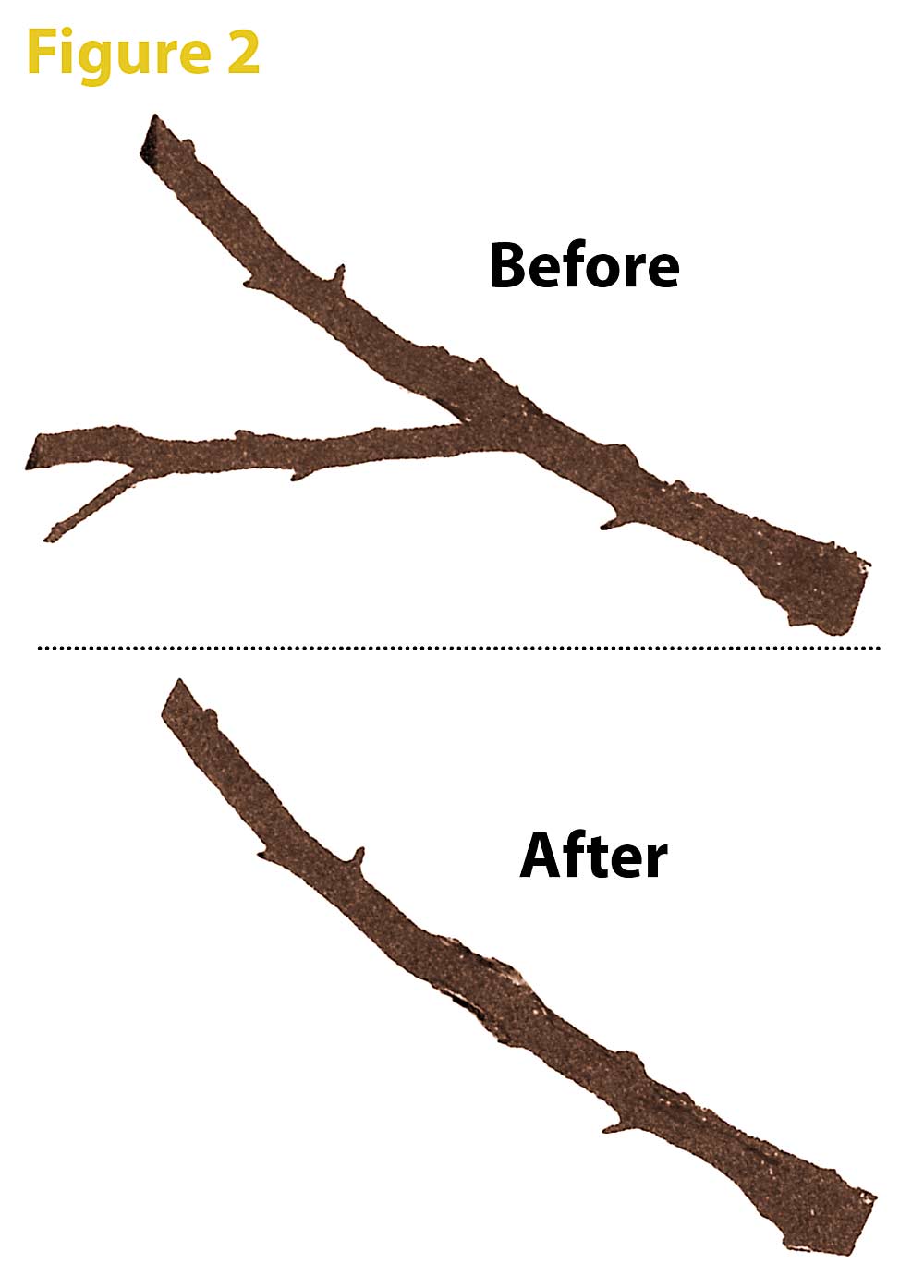
RULE 5: Maintain correct height of the trees or canopies to avoid inter-row shading.
For trees forming upright canopies, the maximum permissible height in summer is 80 percent of row width. For Tatura-type canopies, it is 60 percent.
RULE 6: Postpone cutting (topping) the heads until the structure of the tree has been formed.
Keep the heads upright and soft. Regard the very tip (apex) of the leader (stem) as the “rudder of the ship.” It communicates with the rest of the tree, including the roots.
The less you interfere with the head, the calmer the tree remains. If you have to head the leader, do it after flowering to minimize a vigorous response.
RULE 7: Contain the length of a scaffold by pruning back into 2-year-old or older wood.
Scaffolds should never be longer than 1.25 meters (4 feet) and should be generally horizontal, not bowed. The older the wood is, the less growth response you get.
RULE 8: Keep your fruiting wood young — using the 1-2-3 rule of renewal pruning.
It is well known that 2-year-old wood is the most productive and has the best fruit size and quality.
RULE 9: Delay heading branches to avoid blind wood.
When trees reach their maximum permissible height, do not head them in winter but rather wait and make the heading cuts during flowering and up to late spring. Delayed heading prevents the trees from responding as they do when you head them in winter.
Blind wood is a growth characteristic of certain apple and pear varieties, where buds at the basal ends of branches remain dormant or blind. Blind wood hinders the development of fruiting wood, which forms the basis of the bearing capacity of your trees.
RULE 10: Get rid of old, tired spurs.
Old and/or weak spurs bloom late, do not set fruit well, have small spur leaves and produce small fruit. Keep the spurs in your trees strong by pruning them back to one or two buds facing up, and by keeping the trees open to let more sunlight into the canopy.
These 10 pruning rules let you consistently produce apples and pears of good quality and marketable sizes.
Applying the appropriate rules to young trees will save you many headaches later. Directing growth in the early years is better than correcting growth in later years. The trees will fight you if you do the wrong thing — a fight you will not win.
Applying some of the pruning rules to mature trees may temporarily reduce yield, but it will immediately improve packout and returns. It is the bottom line that counts.
Do not wait until you notice a reduction in fruit size, quality and packouts before you apply these pruning rules.
—by Bas van den Ende

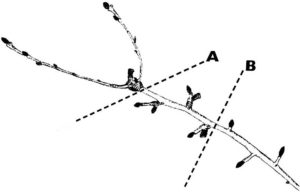





“…do not head them in winter but rather wait and make the heading cuts during flowering and up to late spring…”
This means that I’ll be pruning during “fireblight season”.
What to do?
Hello Barry,
In Australia, we fortunately do not live with fire blight. For those fruit growers who have to live with fireblight, I invite comments on this particular pruning rule. Delay-heading is a very powerful pruning method, especially for growers in countries which do not have fire blight. I can understand your dilemma Barry.
Bas van den Ende
Thanks for the great article! I’d also like to read any comments about balancing Fireblight w/ spring topping.